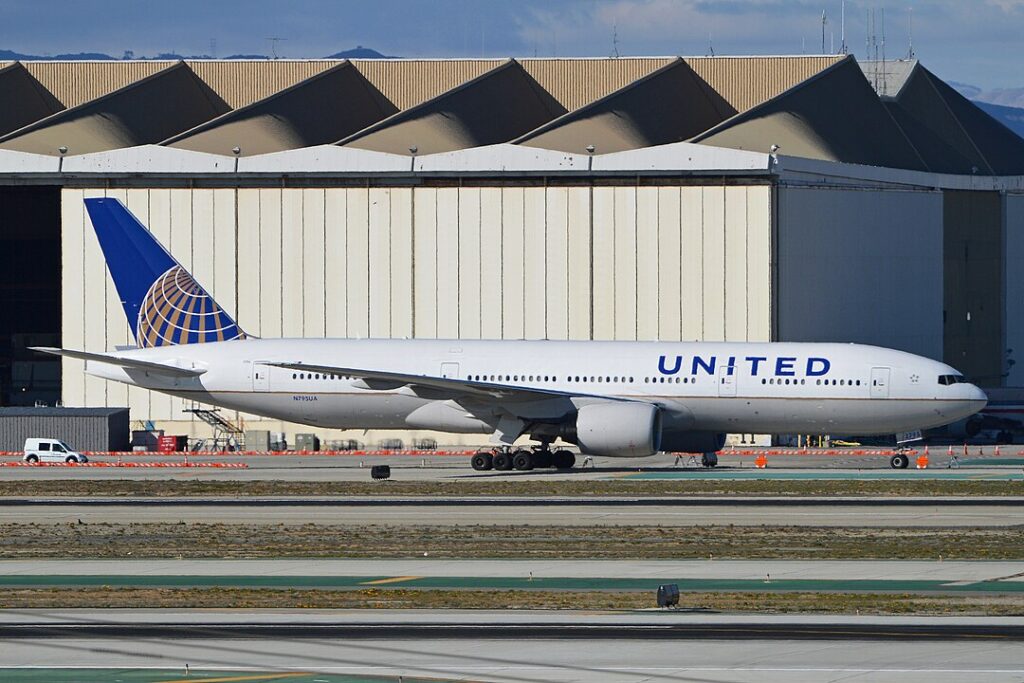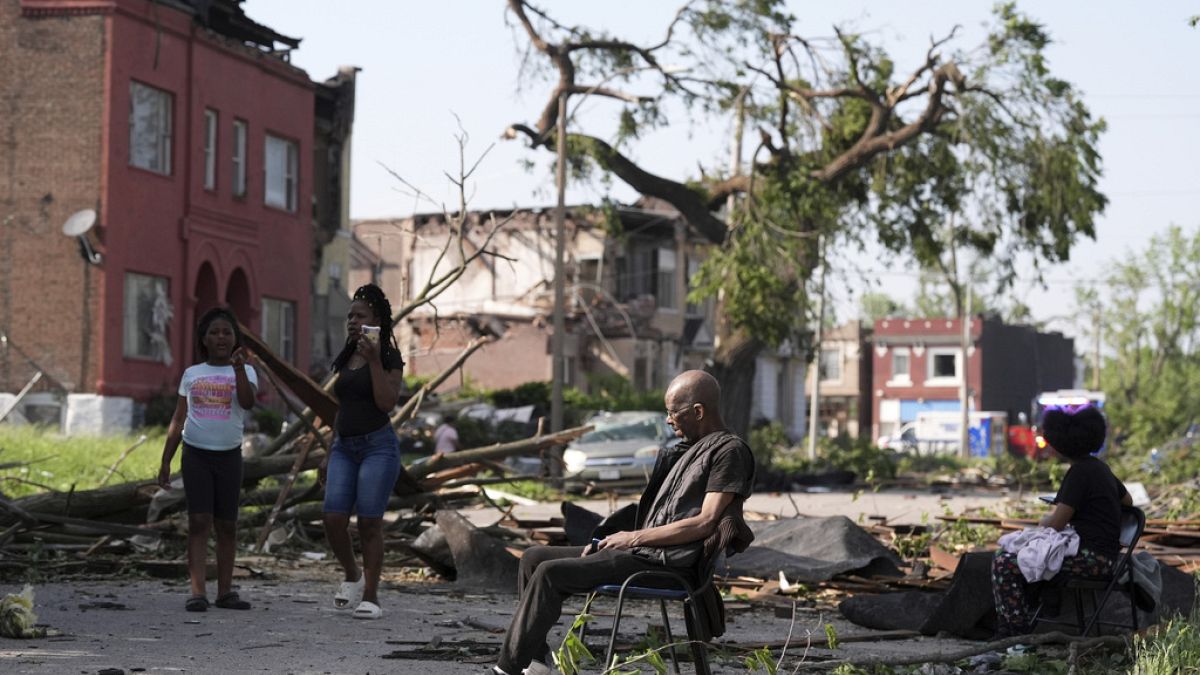Unprecedented glacial flooding over the weekend swept away two homes and severely damaged others in Alaska’s capital city, officials said Sunday.
Alaska
Record glacial flooding swept away two homes in Alaska’s capital

The water surrounding the 3,000-year-old Mendenhall Glacier, which draws tourists from around the world, is now threatening the city.
Flooding from the glacier has been happening every summer since 2011, but this weekend’s overflow smashed previous water level records by nearly three feet. “It really exceeded our expectations,” said National Weather Service meteorologist Andrew Park, adding that it is “pretty devastating for the community.”
Scientists are still learning a lot about the decade-old phenomenon, he said.
Violent flooding from the basin above the glacier began on a perfectly dry day in 2011. Park said meteorologists and hydrologists were at first baffled as to why the river was rushing when there had been no rain. But then they found that a basin above the Mendenhall Glacier was creating enough pressure to push its water through the glacier and into Mendenhall Lake, Park said, causing an entirely new flooding threat to the community.
Every year, the basin fills until the pressure causes the water to look for a path out.
“Water finds a way,” Park said. “It finds the weakest point.”
Since 2011, he said, scientists have studied the basin to monitor the situation around these annual releases — but this year’s outburst was historic. The Mendenhall Lake gauge crested about 11:30 p.m. local time Saturday night at a level of 14.97 feet, he said, which smashed the previous record of 11.99 feet set in July 2016.
The lake’s level as of 10:15 a.m. local time Sunday was 8.96 feet with levels receding, per NWS data.
Park said it isn’t clear if this phenomenon can be blamed on climate change.
“This is still a recent phenomenon,” Park said, later adding, “there’s going to be a lot of eyes on this.”
Scientists have said that although no weather event is caused solely by mankind’s influence, the frequency of extreme weather is increasing because of human-influenced climate change. Cities around the world are having to adjust to the new normal caused by extreme weather.
So what changed this year to create such fierce flooding? “We don’t know the answer to that yet,” Barr said.
When asked how many homes were flooded, he said it was in the dozens.
“Dozens is a big number for us,” said Barr, who helps run the city of about 32,500 residents.
There will be ripple effects from the flooding, too, he added. An unknown number of homes that run on oil had their fuel tanks swept away. Barr said the city contacted the Coast Guard and state environmental agencies for help.
“They’re aware and they are helping us think through, if there’s any sort of spill, a protection response,” he said.
City officials declared a local state of emergency midday Sunday, as crews work to safeguard roads and bridges affected by the flooding.
The torturous part for residents, scientists and city leaders is that it seems the flooding will now happen in Juneau every year — but the severity will remain a mystery until only shortly before the waters come rushing.
“There’s not much we can do from a prevention point of view,” Barr said.

Alaska
Two Alaska Airlines 737 Planes Collided at Seattle Airport

SEATTLE- Two Alaska Airlines (AS) planes collided while preparing for takeoff at Seattle-Tacoma International Airport (SEA), causing passengers to disembark and return to the gate. The incident involved a minor wingtip contact between a Boeing 737-800 and a 737-900, both scheduled for California destinations.
The collision occurred just after noon on Saturday (May 17, 2025) as ground-service tugs pushed the aircraft back from their gates. Flights to Orange County (SNA) and Sacramento (SMF) were impacted, though no injuries or significant delays were reported.

Alaska Airlines Planes Clip Wings at Sea-Tac
The wingtip collision between two Alaska Airlines Boeing 737 aircraft happened during a routine gate pushback at Seattle-Tacoma International Airport. The event occurred on a busy Saturday afternoon, a high-traffic period for departures.
According to Alaska Airlines, ground-service tugs were maneuvering both jets when the aircraft wings made contact.
Both jets were en route to California—one to Orange County John Wayne Airport (SNA) and the other to Sacramento International Airport (SMF).
While the incident did not result in any injuries, standard safety protocols required both aircraft to return to their gates. Passengers were promptly deplaned and later rebooked on alternate flights.
Kassie McKnight-Xi, spokesperson for the Port of Seattle, emphasized that the contact was minor and did not cause operational delays. The FAA confirmed it will investigate the circumstances surrounding the incident to assess compliance with aviation safety protocols and ground-handling procedures.


Similar Incidents
Two United Airlines (UA) Boeing 777-300ER aircraft collided at San Francisco International Airport on May 6, 2025, forcing the cancellation of both trans-Pacific flights. The incident occurred at approximately 12:35 AM local time when the right wingtip of United Flight UA863 struck the left wingtip of United Flight UA877 during pushback operations.
UA863, scheduled to depart for Sydney Airport, hit UA877, which was bound for Hong Kong International Airport, as both aircraft maneuvered near Terminal 2, Gate 6. The collision happened in an area where air traffic controllers do not directly communicate with flight crews, instead relying on ground crew coordination.
The impact caused visible damage to both aircraft’s wingtips. All 522 passengers and 32 crew members across both flights escaped injury. United Airlines immediately deplaned passengers and began rebooking them on alternative flights.
On February 5, a Japan Airlines (JL) Boeing 787-9 collided with a Delta Air Lines Boeing 737-800 at Seattle-Tacoma International Airport. The Japan Airlines aircraft arriving from Tokyo struck a Delta aircraft preparing for departure to Puerto Vallarta.
In January, American Airlines (AA) experienced two separate collision incidents.
On January 10, two American Airlines Boeing 737s made contact at New York’s LaGuardia Airport when an aircraft under tow struck the wing of a parked plane.
Two days earlier, on January 8, an American Airlines Boeing 737-800 hit the tail of a United Airlines Boeing 787-10 during taxiing operations at Chicago O’Hare International Airport.
Stay tuned with us. Further, follow us on social media for the latest updates.
Join us on Telegram Group for the Latest Aviation Updates. Subsequently, follow us on Google News
Alaska
Alaska Airlines planes clip wings at Seattle-Tacoma airport, prompting FAA probe

Fox News senior congressional correspondent Chad Pergram has the latest on aircraft travel issues on ‘The Bottom Line.’
The Federal Aviation Administration (FAA) is investigating after two Alaska Airlines planes clipped wings at a Seattle-Tacoma International Airport gate Saturday.
At about 12:15 p.m. local time, ground-service tugs were pushing back two aircraft from their gates when their winglets touched, an Alaska Airlines spokesperson told FOX Business.

Alaska Airlines flights 1190 and 1094 clipped wings Saturday. (LunatikMedic/Erik Luna / Fox News)
TRUMP CONTINUES TO DEFEND QATAR GIFTING US $400M JET: ‘WE SHOULD HAVE THE MOST IMPRESSIVE PLANE’
There were no injuries, the spokesperson said.
Passengers on the two flights deplaned at the gate, were transferred to other aircraft and departed a short time later.

An Alaska Airlines Boeing 737-900ER aircraft on the tarmac at Seattle-Tacoma International Airport in Seattle. (David Ryder/Bloomberg via Getty Images / Getty Images)
MAJOR AIRLINE MAKES BIG CHANGE TO EASE TRAVEL WOES AMID CHAOS AT NEWARK AIRPORT
“We sincerely apologize to our guests for the delay and inconvenience,” an Alaska Airlines spokesperson said.
| Ticker | Security | Last | Change | Change % |
|---|---|---|---|---|
| ALK | ALASKA AIR GROUP INC. | 53.65 | +0.67 | +1.26% |

The FAA said it is investigating the Alaska Airlines incident. (Kevin Carter/Getty Images / FOXBusiness)
GET FOX BUSINESS ON THE GO BY CLICKING HERE
FAA air traffic control is not responsible for plane movements in the gate area, the agency wrote in a news release.
Alaska
As Alaska warms, Arctic geese are skipping their southern migration

Out on Izembek Lagoon, the water was flat and clear. Alison Williams, a biologist with the U.S. Fish & Wildlife Service, dipped her paddle in and steered her kayak toward the center of the lagoon, where the seagrass below runs thick.
“Everything below us is eelgrass,” she said. “It actually evolved on land and then evolved to go back into the water.”
The lagoon is the heart of the Izembek National Wildlife Refuge, a wide expanse of tundra and small lakes that stretches 310,000 acres across the Alaska peninsula, between the Pacific Ocean and the Bering Sea. It’s the smallest federal wildlife refuge in Alaska but one of the most important. It’s home to hundreds of thousands of birds: Pacific black brant, emperor geese, pintails and eiders.
This time of year, Izembek is famous as a stopover for migrating birds — a place to rest and refuel as hundreds of species move between their southern wintering grounds and the Arctic.
Refuge manager Maria Fossado underscores how central this place is for migration.
“Wildlife are very smart, and they like to capitalize on use of energy,” she said. “Their focus is feeding, resting and capitalizing on when food is available.”
Theo Greenly / KSDP
/
KSDP
As the Arctic warms, some birds, like the Pacific black brant, are cutting their migrations short and spending the winter at the refuge. Williams says declining sea ice has made it easier to find the resources they need.
“It used to be, in the ’80s, a couple thousand. Increasingly, more of them are staying all winter long. Fifty to sixty thousand — the thought is, the lagoon is freezing over less, we’re getting less ice, and so the brant can access the eelgrass,” she said.
The lagoon is Izembek’s crown jewel. It hosts one of the largest eelgrass beds in the world. So why fly 2,800 miles to winter in Mexico when it’s plenty warm here?
“It might freeze up and then melt a couple times during the winter now, which is part of why people think that the brant are staying over more during the winter,” Williams said.
But overwintering has its costs. Brant don’t have to fly as far — but surviving an Alaska winter takes more energy than it does in a warmer place. Williams calls it a game of trade-offs.
A study published in March the journal Movement Ecology looked at brant over a 10-year period. It found the benefits mostly cancel out: the energy saved on the commute is about the same as the energy spent making it through the colder winters.

Theo Greenly / KSDP
/
KSDP
A fragile habitat holds on — for now
Beneath Williams’ kayak, there was a sprawling underwater meadow — the eelgrass beds that fuel the entire ecosystem.
“There’s a lot of things that live in the eelgrass,” Williams added. “It’s good habitat for a huge array of things.”
Tiny snails and clams burrow into it. Fish shelter inside it. And birds like the black brant depend on it for the energy to migrate — or overwinter.
The U.S. Geological Survey surveyed the eelgrass cover at Izembek in 2016 and 2020.
“There was some loss of eelgrass in the central part of the lagoon, where we are now,” Williams said. “And then a couple areas where we actually gained a little bit.”
Overall, the survey found a slight decline — far less than the global average. Worldwide, scientists estimate that about 30% of eelgrass habitat has vanished, hit hard by warming waters, pollution and invasive species.
Izembek remains one of the largest intact strongholds for this vital ecosystem. But in a warming world, even the most remote places are changing.
-

 Austin, TX1 week ago
Austin, TX1 week agoBest Austin Salads – 15 Food Places For Good Greens!
-

 Technology1 week ago
Technology1 week agoNetflix is removing Black Mirror: Bandersnatch
-

 World1 week ago
World1 week agoThe Take: Can India and Pakistan avoid a fourth war over Kashmir?
-

 News1 week ago
News1 week agoReincarnated by A.I., Arizona Man Forgives His Killer at Sentencing
-

 News1 week ago
News1 week agoWho is the new Pope Leo XIV and what are his views?
-

 Politics1 week ago
Politics1 week agoDepartment of Justice opens criminal investigation into NY AG Letitia James
-

 World1 week ago
World1 week agoNew German chancellor aims for stronger EU ties with France and Poland
-

 News1 week ago
News1 week agoJudge Orders Release of Rumeysa Ozturk, Tufts Student Detained by ICE














